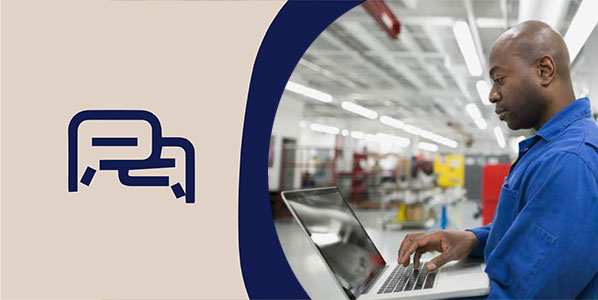
Gartner’s latest survey of 103 CFOs and senior finance leaders, taken at the end of May 2020, shows real estate topped the list for planned cuts to next year’s budgets. Perhaps no surprises there I hear you say. But as businesses rethink how they approach remote working practices and policies longer term, what are the knock-on effects and considerations for workplace learning and development programmes and how will they be delivered in future?
Addressing relevant needs
Whether it’s leadership development, software ‘how to’ sessions, unconscious bias training, or all the above, your organisation’s training calendar and delivery methods have likely been completely turned upside down during lockdown. To address the immediate needs of this unique pandemic situation, courses were understandably created or re-designed at speed.
This certainly resonates with Employee Development Manager at ADP UK, Amanda Geal, who says,
‘Some of the materials and exercises have had to be reviewed for suitability now we are remotely connecting with our audience and some resources fully redesigned.’
Now let’s fast forward to a world where entire teams might continue to work remotely or there is a blend of office and home-based workforces. In that world you would expect several of the learning and development needs that became immediately apparent during lockdown to remain.
Supporting leaders and teams in areas such as virtual communications and team building, together with wider employee wellness programmes, would therefore continue. But if you add pre-existing learning and development needs specific to your business or industry into that mix, the calendar quickly fills up, with a range of materials, courses and resources needing to be delivered.
Making virtual a success
So, how can you design and deliver compelling and engaging training programmes for remote workforces for the longer term?
Amanda Geal finds that an acute awareness of digital channels and their impact must continue to be front of mind.
“It’s important when delivering remotely that the sessions are quick and impactful. People have got short attention spans at the best of times, and of course with audiences working from home they may not have the luxury of a quiet space. It’s also vital to recognise the value in keeping the size of the cohort small enough so that people can ‘get involved’ and feel they can participate, as it’s a more intimate group”.
Fosway Group’s recent survey found that digital learning content such as video, curated, mobile and microlearning were the most successful in supporting organisations during the pandemic. According to that research, traditional e-learning showed signs of waning both in adoption and perceived success.
But ensuring learning and development programmes remain effective when delivered online longer term, of course involves a lot more than just putting trainers and employees on camera. Time spent on quality content creation and carefully preparing the delivery pays off. Amanda Geal claims that the technology platform almost comes second to the content and delivery style.
“Of course, technology has been important in keeping the learning and development teams connected to the wider workforce, but it hasn’t got to be all bells and whistles. A simple Webex meeting or facilitated session with an authentic and empathetic facilitator covering the right topics, can be more impactful than a fully loaded technical explosion!”
Creating ‘space for learning’
The CIPD argues that to remain relevant in a challenging labour market, organisations need to think strategically about how they invest in and develop their human capital. One way to do this is to create a supportive learning environment where learning is not only embedded but encouraged across every level of the organisation – often described as a learning culture. This approach seems more relevant than ever where entire workforces continue to work remotely and time for learning and development could slip off the radar, as it is deemed yet more time in front of the computer... Their recent research unpacks what learning culture means in practice, and what you can to do to embed a learning environment in your organisation.
TrainingZone a key online destination for learning and development professionals has also now created a dedicated flexible learning hub of resources which is useful for insights and guidance on the ingredients needed to take a flexible learning approach, which is about helping learners become agile, take ownership of their development and be self-motivated to learn.
The future of learning and development programmes
Research by Fosway Group, shows that only 5% of learning leaders surveyed believed that “learning strategy, investment and resourcing would revert back to what we used to do”.
But with informal social learning diminished when working remotely and significant challenges presented by onboarding remotely, plus the beginnings of virtual fatigue, is the future really going to be just digital?
Now is the time according to Nigel Standing, ADP’s Director of Learning Delivery EMEA, to explore some pertinent questions, if you haven’t already done so;
"How are you targeting your future learning investments to build and expand your digital capability? How are you integrating your digital learning into business collaboration platforms like Microsoft Teams? What in-person and socially distanced learning will you build a case to run to support your business?"
At the end of the day, you might well find that specific learning may still benefit from being in-person regardless of where workforces end up being located. If you are pivoting to more digital delivery though, remember that keeping any digital efforts short, interactive and perhaps even fun, pays off in the longer term!
Laura Wipfler is External Communications Manager at ADP UK


